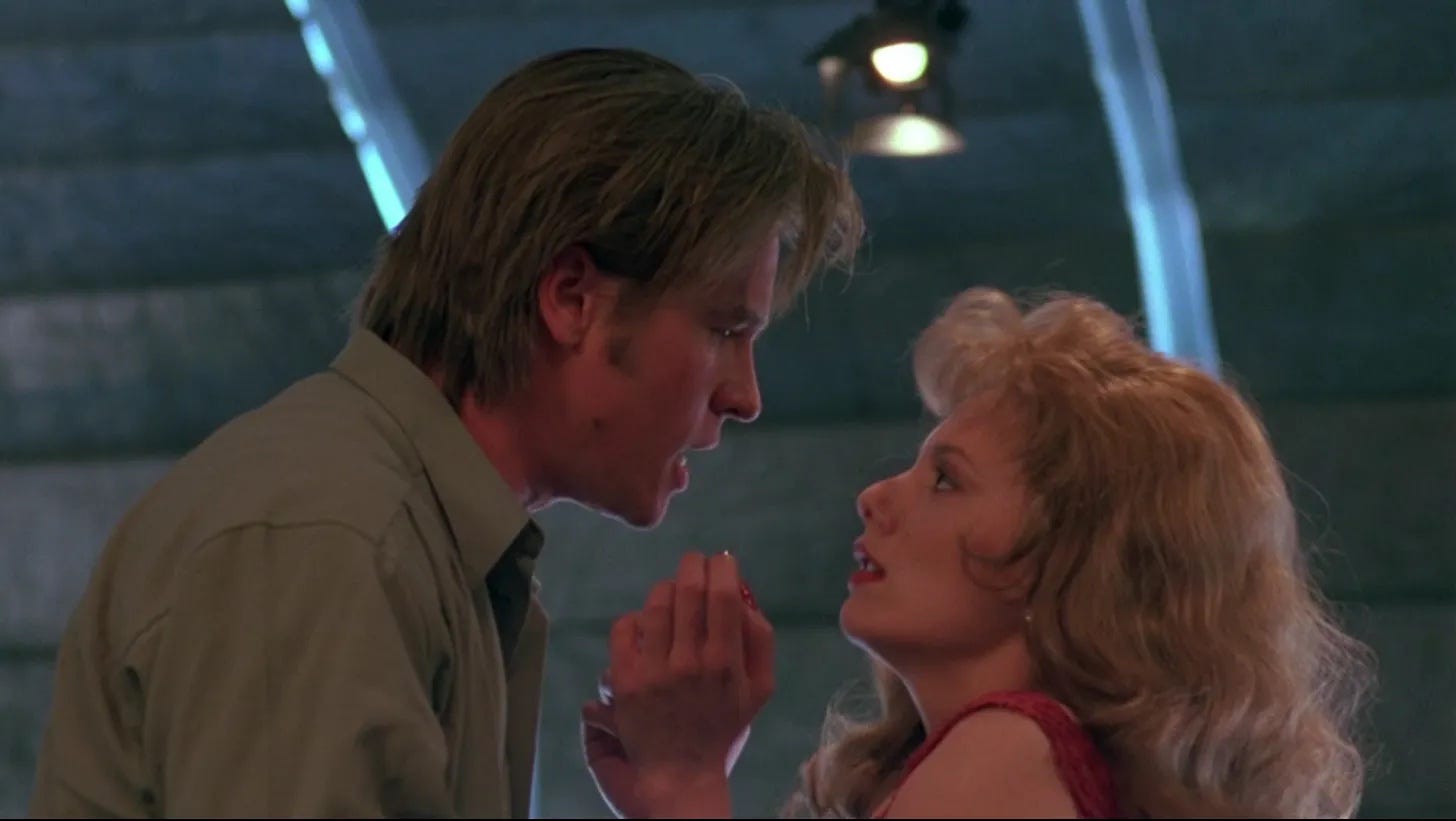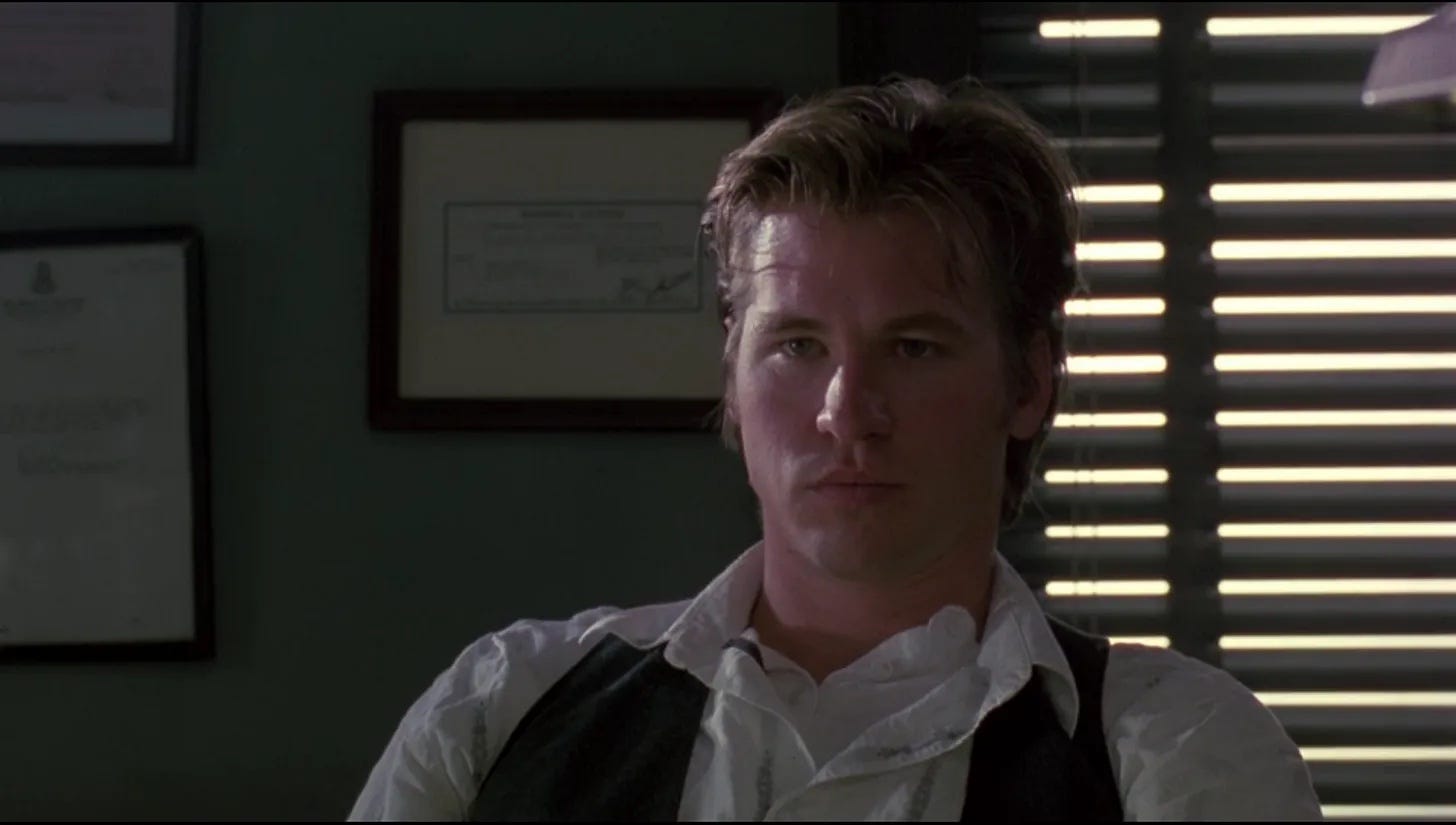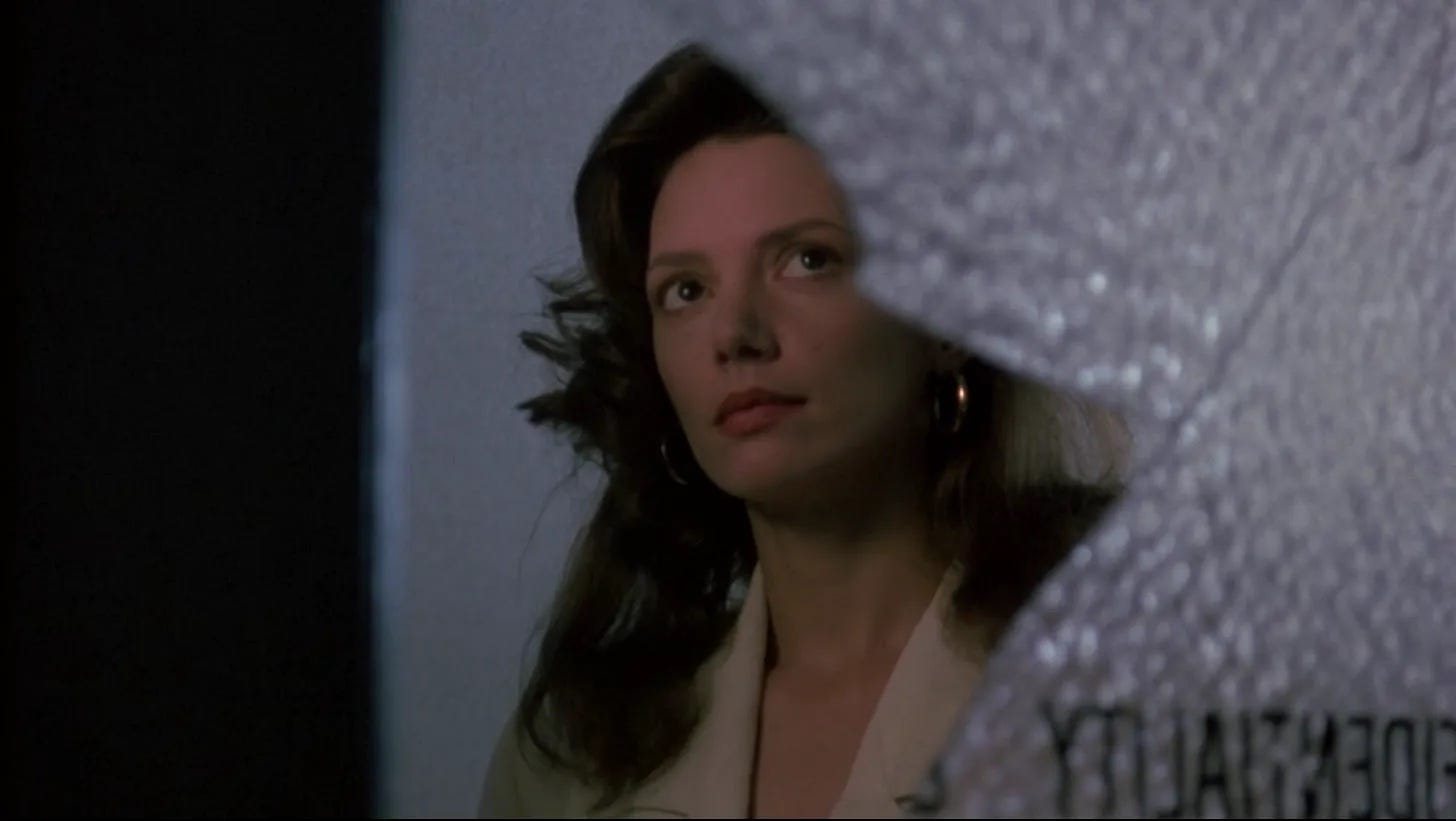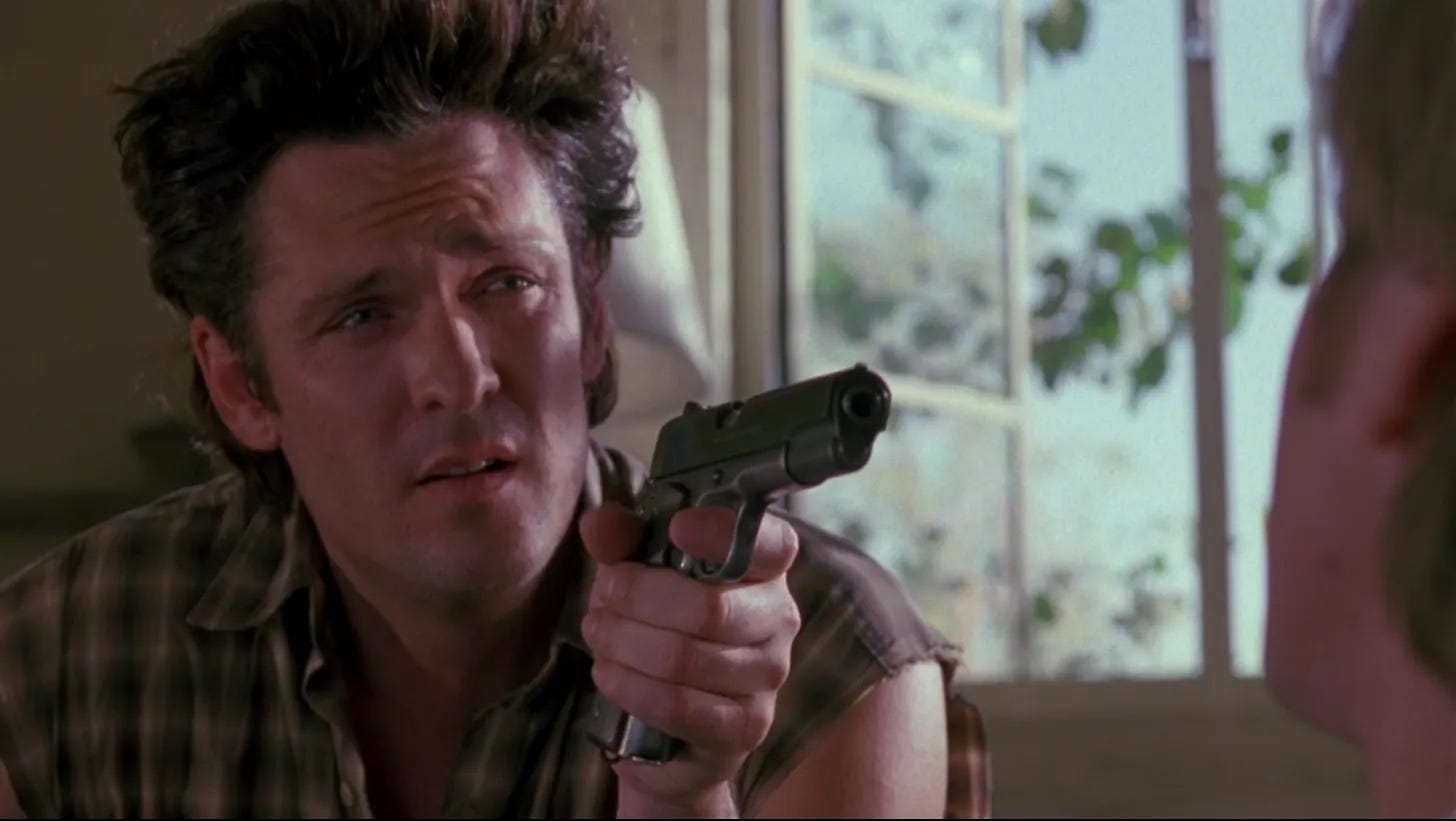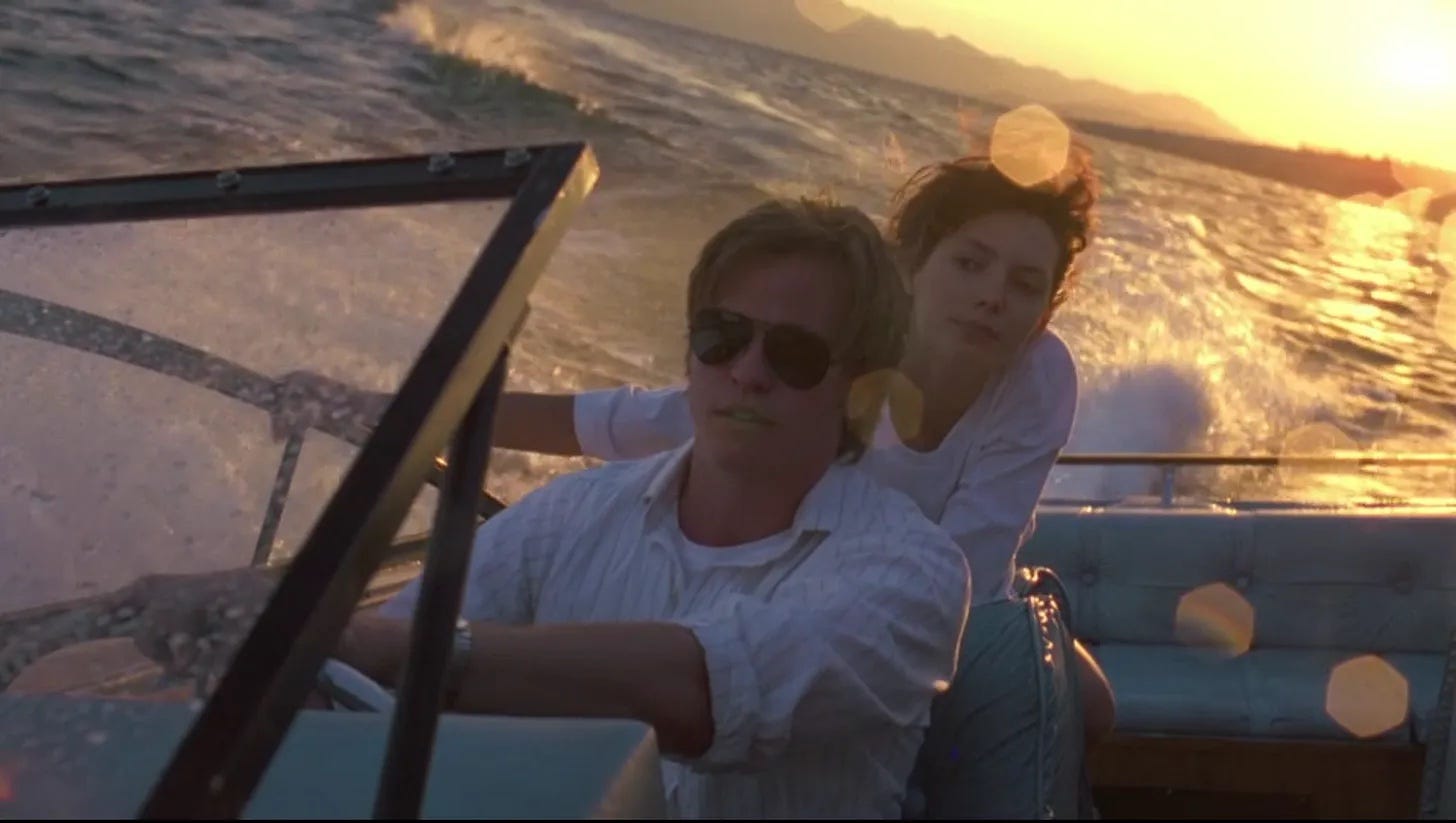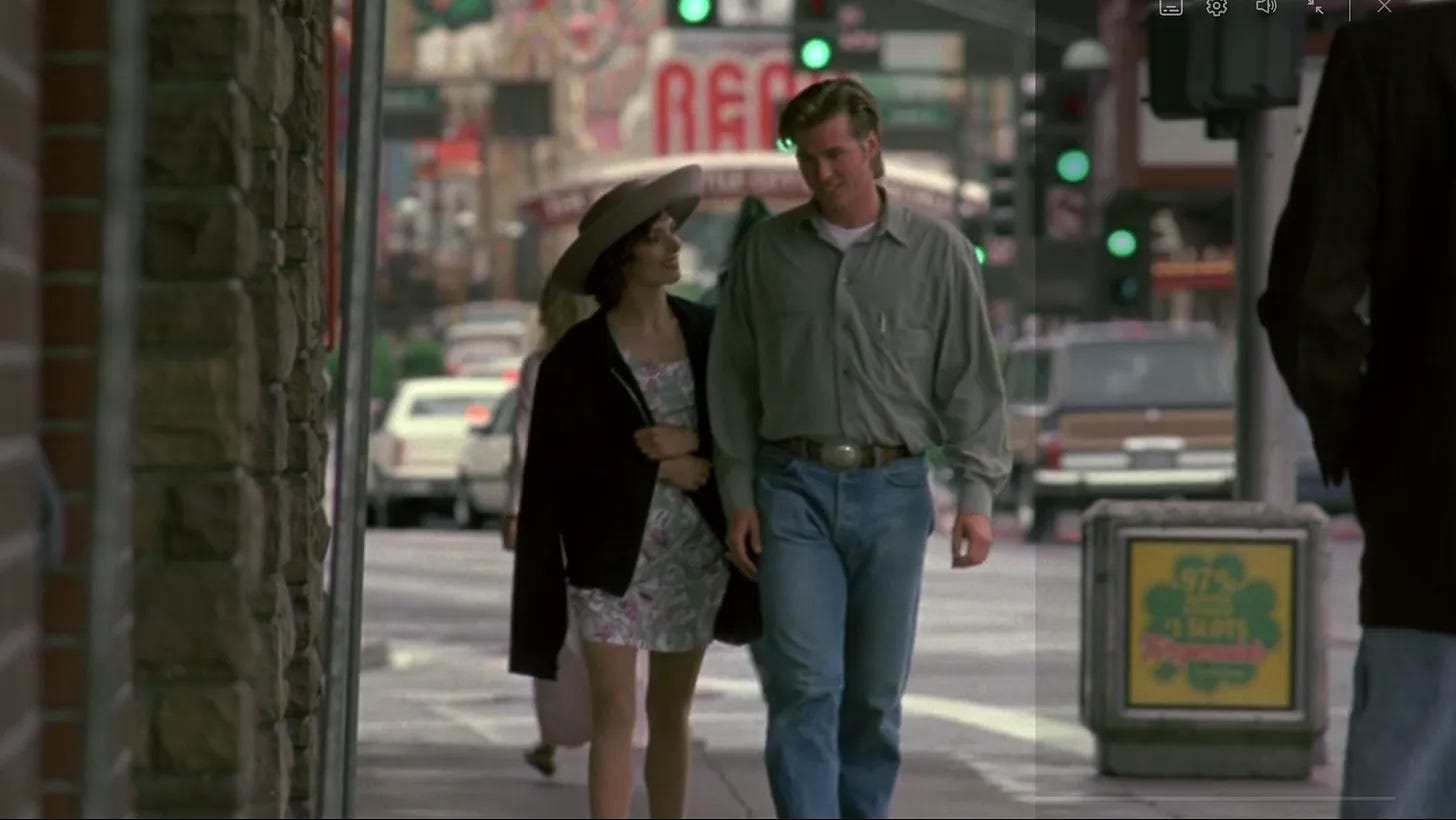In the month of September, Video Days plays the sucker for women who lure us into a world of danger.
KILL ME AGAIN (1989) is a terrific application of the first-time feature filmmaking kit. This includes three principal actors, two motels, two cars, two prop guns, an office set, and a boat. Some assembly will be required–with friends and family of the director coming in clutch–and distribution is not included. Seen by enough people in the film industry, Kill Me Again has the distinction of being the first neo-noir of the 1990s, a piece broken off from the thriller genre in which sleazy detectives, diabolical dames, and money and murder are often involved.
John Dahl grew up in Billings, Montana. His father, a World War II veteran, attended college on the G.I. Bill and went into the insurance business, affording Dahl, his mother and siblings a middle class childhood. John spent two years attending the University of Montana at Missoula majoring in fine arts and watching movies. He wanted to go to school in Southern California and applied to Pasadena School of Design, but his portfolio was passed over. Dahl dropped out of college and went back to Billings to spend a year sorting out what he wanted to do. A brochure for the film department at Montana State University in Bozeman caught his eye and in 1977, Dahl enrolled. The department was small, but equipment plentiful, and he met people with similar interests. He co-wrote his senior thesis with a classmate named David Warfield, a mock horror film titled The Death Mutants. Dahl directed and Warfield did a little of everything: producing, camera operation. Another classmate, Scott Chestnut, got Dahl a gig on a TV movie starring Raquel Welch shooting in Montana in 1980. Dahl would later hire Chestnut as his film editor on six features, from Red Rock West (1993) to You Kill Me (2007).
Dahl followed Warfield to Washington D.C. and took work as a grip on public television. Convincing the producer he could direct, Dahl was promoted to assistant director on a children’s television drama called Powerhouse. The director of photography, Tom Richmond, headed to Los Angeles to study at the American Film Institute, where Dahl’s friend Chestnut had worked as well. Broke, he returned to Billings and told his parents with their help, he’d apply to the AFI and to Montana Law School, choosing whichever accepted him. Warfield and another MSU alum named Beth Friedburg applied to the AFI as well and in 1982, all three headed to Los Angeles. Rather than laboring their students on the technical aspects of filmmaking, the AFI’s focus was story and acting, soliciting thesis scripts from the student body. Warfield & Dahl wrote several comedies, none of which the AFI found amusing enough to produce. Rosemary Brandenburg, the assistant art director on Powerhouse, got Dahl a job in the art department of a low budget movie, but seeing he could draw, got him started drawing storyboards for low budget music videos Dahl would work his way up to storyboarding a music video on a larger budget for a bigger artist: “Just A Gigolo” by David Lee Roth. Massively popular, the video led to six months of work drawing storyboards for a movie Roth was developing called Crazy From the Heat that was never produced.
Warfield & Dahl continued to write. One of their scripts, Silent Night, was a horror tale about a deranged man in a Santa Claus costume who returns to the family farm to wreak havoc. When another yuletide horror film–Silent Night, Deadly Night (1984)--beat them to market, the screenwriters started kicking alternate titles around. Warfield suggested Kill Me Again. Dahl had always been a fan of pulp fiction, with lurid titles like I Wake Up Screaming, and working backwards from a character who needed to say “Kill me again,” they developed a story. Within eight weeks, Warfield & Dahl had a script. Having written comedies or tongue-in-cheek horror, their agent didn’t know what to make of Kill Me Again. Seeking representation from someone who did, Warfield & Dahl landed an agent at William Morris Agency. The writers agreed they’d accept an offer of $300,000 or higher for their script, otherwise, they’d make the movie themselves, with Warfield producing and Dahl directing. It became apparent that the latter would be necessary.
Meanwhile, two AFI alumni–Steve Golin and Sigurjón "Joni" Sighvatsson–were graduating from producing films with titles like Hard Rock Zombies (1985) and American Drive-In (1985). They’d realized that instead of grinding out low budget exploitation movies, music video was where the opportunity was, and in 1986, launched Propaganda Films. Golin and Sighvatsson’s vision was to introduce film techniques to music video and commercials, and ultimately, video and commercial sensibilities to movies. They hired Warfield & Dahl to write a low budget action thriller titled P.I. Private Investigations (1987). Propaganda took off in 1989, winning the contract to produce the music videos for Janet Jackson’s Rhythm Nation 1814 album, as well as several for Madonna in her Like A Prayer year. Working for Propaganda were directors like Nigel Dick, Dominic Sena, David Fincher, and Michael Bay, all getting their start on the small screen with music videos. Propaganda made a similar bet on John Dahl, who by now was drawing storyboards for feature films: RoboCop (1987) and the Jonathan Demme pictures Something Wild (1987) and Married to the Mob (1988). Dahl was tempted with an offer to draw the storyboards for The Silence of the Lambs (1991) next, but with Steve Golin and Sigurjón Sighvatsson as producers with David Warfield, chose to make the leap into directing with Kill Me Again.
Propaganda Films entered into a deal with PolyGram Filmed Entertainment, sharing revenue from their productions for what they thought would be adequate financing to make them. For Kill Me Again, they hired a casting director (Carol Lewis) to generate a list of half a dozen actors to play Fay Forrester, a dangerous dame who rips off the cash her boyfriend steals from a Nevada mobster, and Jack Andrews, the Reno private eye she hires to help her disappear with it. Warfield & Dahl had been thinking about Joanne Whalley from Willow (1988) for their femme fatale but hadn’t known how to reach her in England. With a production budget of $4.5 million contingent on MGM/UA co-financing the picture with PolyGram, the studio had a list of actors they approved for the male lead. The most realistic to Dahl was Val Kilmer, also of Willow. Agreeing to double his salary from the Lucasfilm extravaganza, Golin and Sighvatsson were able to get their studio-mandated star. When Kilmer asked Dahl who he was thinking of for the female lead, the director asked what he thought of Whalley. It turned out Kilmer liked her, having recently married her. Joining Kilmer and Whalley (as Joanne Whalley-Kilmer) as the sociopath hunting their characters was Michael Madsen. He was finishing the decade with an impressive body of work in Diner (1982), Racing with the Moon (1984), The Natural (1984) and Miami Vice and Crime Story on television. Often cast as a variation of the same character–a rockabilly hoodlum–Madsen was getting an opportunity to play one to the hilt.
To hire a director of photography, Dahl hit it off with Jacques Steyn, the Dutch cinematographer of The Mighty Quinn (1989). Like many directors, Dahl was a fan of painter Edward Hopper, particularly Hopper’s lesser-known work in Dahl’s field of graphic design. To communicate with Steyn the look he wanted, Dahl referenced Hopper’s magazine covers as well as his paintings, and movies of the 1930s and ‘40s to ground the film in the noir tradition. Shooting commenced April 1989 in Los Angeles, where the interiors of Jack Andrews’ office were staged at Mack Sennett Studios. Office exteriors were filmed outside the Market Hotel in the Fashion District. Filming moved to Nevada, which Warfield & Dahl had canvassed by car looking for eclectic locations to stock their script with. Instead of Las Vegas, their opening sequence was shot in Winnemucca, where small town charm mingled with a certain seediness. Locations in Reno included the Nevada Club (one of the resort city’s oldest casinos, shuttering in 1998) and the Rancho Sierra Motel. Most of the filming in Sin City was based at the Las Vegas Hilton. The “Echo Bay Motel” was filmed at the Lake Mead Lodge outside Boulder City, while the climax was filmed in the nearby Lake Mead National Recreation Area.
Dahl called in family and friends to participate in Kill Me Again. His brother Rick Dahl–who the director would write his next picture Red Rock West with–started as a PA and was utilized as Kilmer’s stand-in. His former classmate Beth Friedburg, now Dahl’s wife, was hired as the second unit director of photography, but running out of work, was dispatched to the scenic and very eerie Valley of Fire to grab some shots. Friedburg’s work not only ended up as the opening credits sequence, but prompted Dahl to rethink the music. Instead of a rustic, steel guitar sound, he associated his wife’s footage with an orchestral score closer to the work Bernard Herrmann composed for Alfred Hitchcock, hiring William Olvis for the score. To cut the picture, Dahl’s first hire was Frank Jimenez, who’d worked on They Live (1988) for director John Carpenter. Jonathan Shaw, an assistant editor on Blue Velvet (1986), did some work and when Jimenez departed, Dahl brought in a friend named Eric Beason who’d worked with Dede Allen as an associate editor on The Milagro Beanfield War (1988). Dahl ended up working with Beason on much of Kill Me Again, which would clock in at 94 minutes.
Dahl called in family and friends to participate in Kill Me Again. His brother Rick Dahl–who the director would write his next picture Red Rock West with–started as a PA and was utilized as Kilmer’s stand-in. His former classmate Beth Friedburg, now Dahl’s wife, was hired as the second unit director of photography, but running out of work, was dispatched to the scenic and very eerie Valley of Fire to grab some shots. Friedburg’s work not only ended up as the opening credits sequence, but prompted Dahl to rethink the music. Instead of a rustic, steel guitar sound, he associated his wife’s footage with an orchestral score closer to the work Bernard Herrmann composed for Alfred Hitchcock, hiring William Olvis for the score. To cut the picture, Dahl’s first hire was Frank Jimenez, who’d worked on They Live (1988) for director John Carpenter. Jonathan Shaw, an assistant editor on Blue Velvet (1986), did some work and when Jimenez departed, Dahl brought in a friend named Eric Beason who’d worked with Dede Allen as an associate editor on The Milagro Beanfield War (1988). Dahl ended up working with Beason on much of Kill Me Again, which would clock in at 94 minutes.
The criticisms of a sleeper like Kill Me Again lie in its unrealized potential to be small but great, when it’s a miracle the film was produced at all and with so much inexperience behind the camera, turned out as terrific as it did. Warfield & Dahl–who acquit themselves as passable writers, no less, no more–err on the side of economy where it concerns their characters and story, omitting juicy details where it concerns their Bonnie & Clyde desperadoes, and staging the robbery-homicide that opens the picture plainly. The screenwriters aren’t skilled enough to coax a moody character piece out of this material, and don’t have the resources to make a twisty thriller either, bars that Quentin Tarantino and Christopher Nolan would clear by six feet with their feature film debuts. But in addition to Michael Madsen playing the same character–named “Vince” here instead of “Vic”--in Reservoir Dogs (1992), shots of neon reflected in windshields or a femme fatale lounging on a motel bed would end up in the movie or marketing materials for Pulp Fiction (1994). To their credit, rather than be the last filmmakers of the 1980s to make a slasher movie or a teenage sex comedy, Warfield & Dahl would more or less invent a new sub-genre: neo-noir, revisiting a genre that other than Body Heat (1981) or The Bedroom Window (1987) had been D.O.A. since the 1950s. The result was and is a movie that feels fresh.
John Dahl got lucky with Kill Me Again considering that neither Val Kilmer or Joanne Whalley-Kilmer are well directed and perhaps as a result, neither seem bought in to their characters. Asking any actor to play opposite his new wife in a role that asks her character to deceive and destroy his character may not have been the healthiest idea, but for whatever reason, Kilmer is held back, coming across as neither terribly bright or gloriously stupid but somewhere in the muddled middle. Whalley-Kilmer doesn’t seem to have been assigned or absorbed the proper diet of Barbara Stanwyck or Bette Davis to prepare for her role in an American B-movie, and isn’t as trashy as her role required, perhaps again due to living with her co-star. That said, “muddled” works for these characters, who rather than come across as slick archetypes with all the answers are instead trying to figure things out, giving the film a touch of verisimilitude. This is held together by a sensational villain in Michael Madsen, whose visit to Kilmer’s office is a classic, like a tiger that wanders into a bungalow and wakes the homeowner looking for something to eat. Rather than settle for L.A. or even Vegas, the filmmakers get considerable mileage from their old time Reno locations, combining natural beauty with bargain desperation.
Video rental category: Mystery/ Suspense
Special interest: Femme Fatale


